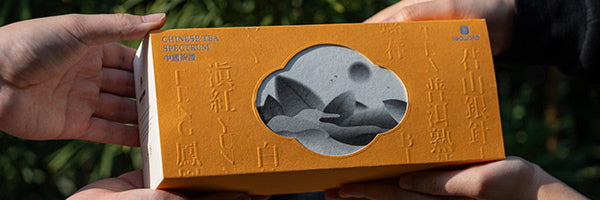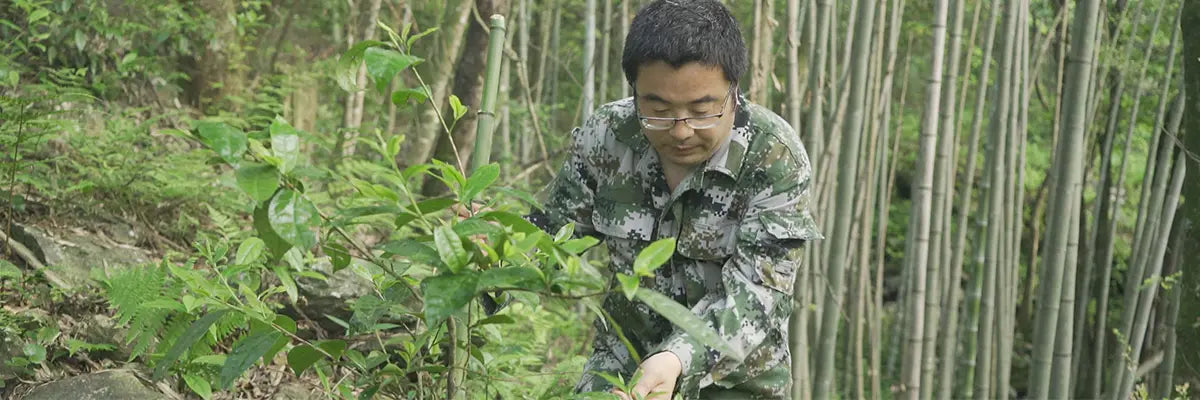What is green tea?
Loose leaf green tea is one type among the six major types of tea in China. The main difference from other loose leaf teas such as loose leaf oolong tea and loose leaf black tea among the six major teas is that loose leaf green tea is non-fermented.

The production process of loose leaf green tea mainly includes Shaqing (killing green), Rounian (rolling), and drying. This processing method aims to preserve the green color of the tea leaves, hence the prominent quality characteristic of green tea is "clear soup and green leaves."
There is a wide variety of loose leaf green teas in China, with over a hundred different types. Famous green teas include Longjing tea, Biluochun, Huangshan Maofeng, and Liuan Guapian, among others.
What is jasmine tea?
Loose leaf jasmine tea is a special type of tea in China that cannot simply be classified as one of the six major teas.

Jasmine tea is made by blending and scenting tea leaves with fresh jasmine flowers, allowing the tea leaves to absorb the floral fragrance. The aroma of high-quality jasmine tea is fresh, lively, and long-lasting, earning it the title of the "first fragrance on earth."
So, what type of tea leaves are used to absorb the floral fragrance of jasmine flowers? In actual practice, various loose leaf teas are used, including loose leaf green tea, loose leaf black tea, loose leaf oolong tea, and loose leaf white tea, among others.
I'm confused, is jasmine tea considered green tea?
At this point, some may wonder whether jasmine tea is a type of green tea.
In reality, most of the time, the jasmine tea you encounter is also considered green tea.
The most common method involves using loose leaf green tea as the base to absorb the fragrance of jasmine flowers. Therefore, the jasmine tea you purchase is likely to be jasmine green tea.
Common varieties of jasmine green tea include Jasmine Longjing, Jasmine Biluochun, and Jasmine Needle King, among others.
Jasmine Tea vs Green Tea: What’s the Difference?
| Feature | Green Tea | Jasmine Tea |
|---|---|---|
| Category | One of the six major types of Chinese tea | A scented tea, most commonly made with green tea as the base, though other types such as black, oolong, and white tea are also used. |
| Processing | Non-fermented; typical steps include Shaqing (kill-green), rolling, drying | Scented by layering fresh jasmine flowers with base tea multiple times |
| Aroma | Clean, grassy, vegetal, subtle | Floral and fragrant; jasmine scent dominates |
| Taste | Fresh, light, slightly bitter or astringent | Smooth, floral, sweet aftertaste (varies by base tea) |
| Caffeine Content | Moderate | Varies: usually similar to green tea, unless other tea bases (e.g. white/black) |
| Production Regions | Widely produced in China (Zhejiang, Jiangsu, Anhui, etc.) | Mainly from Fuzhou, Fujian, and Hengxian, Guangxi |
| Famous Types | Longjing (Dragon Well), Bi Luo Chun, Huangshan Maofeng | Jasmine Longjing, Jasmine Bi Luo Chun, Jasmine Needle King, Jasmine Tieguanyin |
| Best For | Those who enjoy pure tea taste and a refreshing mouthfeel | Those who love fragrant teas or want something more aromatic |
| Starter Tip | Try a Green Tea Sampler for variety and taste range | Start with 3-scent or 5-scent Jasmine Tea, or our Jasmine Sampler |
Jasmine Tea Recommendations
If you are trying jasmine tea for the first time, it is advisable to start with the most common jasmine green teas - 3 scent Jasmine Green. Initially, names like Jasmine Longjing, Jasmine Biluochun, and Jasmine Needle King may seem perplexing. Another approach to selecting jasmine tea is based on the number of times it has been scented with jasmine. It is recommended to try different samples using a tea sampler to discover the jasmine tea that suits your taste.
1.Jasmine Tea of 3 scenting sessions

Jasmine Tea of 3 scenting sessions can be a beginner's choice for jasmine tea. It is relatively economical and easy on the wallet.
This type of jasmine tea achieves a balance between tea fragrance and floral aroma. Upon the first infusion, the aroma fills the room, but it gradually dissipates after multiple infusions.
2.Jasmine Tea of 7 scenting sessions

Jasmine Tea of 7 scenting sessions is a choice for those who seek a higher level of jasmine tea. Generally, the price of Jasmine Tea of 7 scenting sessions is relatively higher, but in terms of the experience it brings, it is considered worthwhile.
Jasmine Tea of 7 scenting sessions exhibits an integrated state of tea fragrance and water. As the floral aroma becomes fuller and fresher, the layers of flavor become more pronounced. The tea infusion reaches a harmonious state, and as you sip, the floral fragrance gradually spreads through the layers of your palate.
Not sure which jasmine tea to start with?
Our Jasmine Tea Sampler includes 3-session to 9-session scenting teas — perfect for discovering your favorite flavor.
→ Explore our Jasmine Tea Sampler >>
Green Tea Recommendations
If you are just starting to explore Chinese green tea, it's best to begin with a few well-known varieties, such as Longjing (Dragon Well) and Bi Luo Chun (Green Snail Spring), which are considered among the best loose leaf tea. This can help you establish a good foundation for appreciating green tea. These green teas are also excellent choices to be included in tea gift sets for family and friends.
1.Longjing (Dragon Well)
Longjing (Dragon Well) is a renowned Chinese green tea produced in the Longjing Village and surrounding areas in the West Lake district of Hangzhou, Zhejiang Province. It is one of the top ten famous loose leaf tea in China and is recognized as a geographical indication product.

The dry leaves of Longjing are flat, smooth, straight, and pointed, with a tender, fresh, and bright green color. Longjing has a lasting and clear fragrance, a mellow and refreshing taste, a tender green and bright clear soup, and the leaves are delicate and bright.
2.Bi Luo Chun (Green Snail Spring)
Bi Luo Chun (Green Snail Spring) is a traditional Chinese green tea and one of the top ten famous loose-leaf teas in China, with a history of over 1000 years. Bi Luo Chun is produced in the Dongting Mountain area near Lake Tai in Suzhou, Jiangsu Province, and is also known as "Dongting Bi Luo Chun." It was designated as a tribute tea during the Tang Dynasty.
The most distinctive feature of Bi Luo Chun is its bright and vivid green color, tightly curled, with white down covering the leaves. After brewing, it exudes a long-lasting fragrance and has a mellow and sweet taste. Drinking it leaves a lingering aftertaste between the lips and teeth.
First time trying Chinese green tea? Taste Longjing, Biluochun and more with our Green Tea Discovery Set.
→ Find your flavor now >>
Jasmine tea and green tea are both beloved for their unique aspects, and there is also some overlap between the two. If you prefer a tea with a more aromatic profile, jasmine tea would be your first choice. On the other hand, if you appreciate a fresher taste, then it's time to explore the diverse world of green tea!












